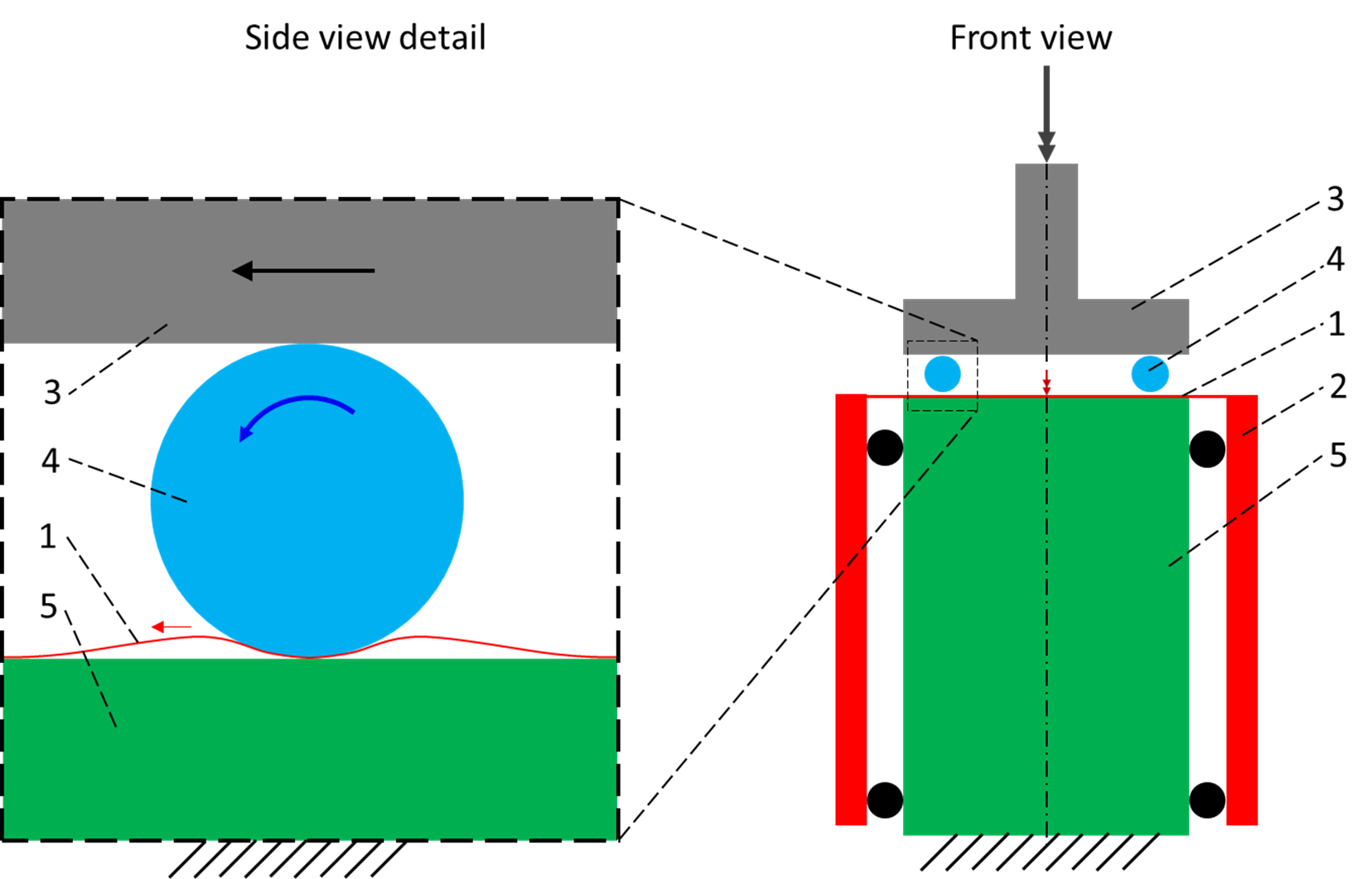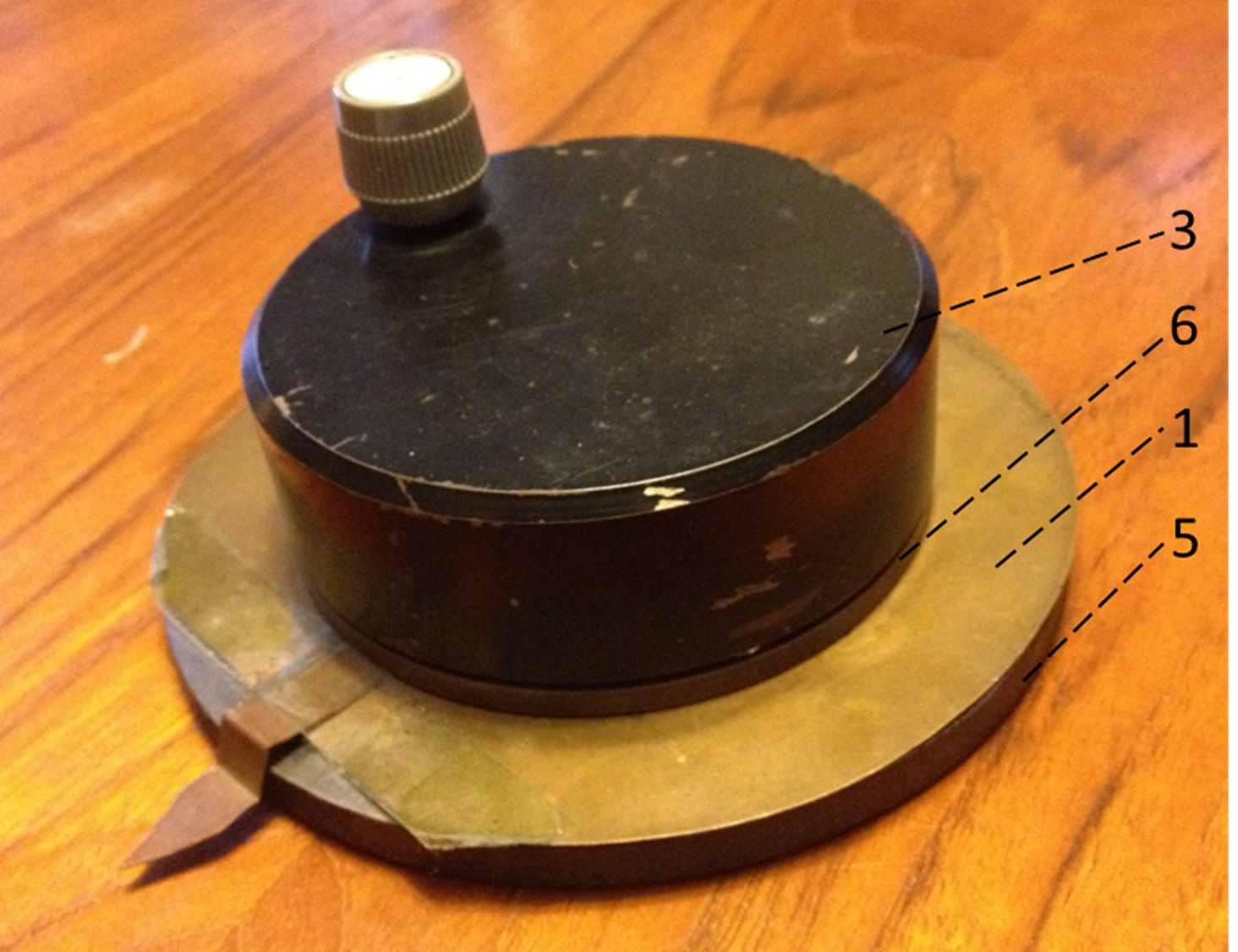Donator, a precision large reduction single-stage transmission mechanism.
Background
In Transmission Electron Microscopes a large reduction transmission from the motor to the stage is required with high stiffness and no backlash to enable precision manipulation without inducing vibrations.
Principle
A thin foil (1), is attached to a rotor (2). A rotating input element (3) presses a number of balls (4) against the foil. The foil rests with some pretension, but without fixation, on a stator (5), which is stationary. The foil and the stator are typically made of hardened steel. The pressure on the balls causes elastic compression of the foil, which in turn gives rise to extension in the tangential direction, due to the Poisson effect. At the contact surface the stator will experience a similar effect but with less tangential deformation due to the much larger stiffness of the thick stator body compared to the thin foil. Therefore, the foil will extend more in the tangential direction than the stator. The extension is a bit counteracted by the in plane stiffness of the surrounding foil it needs to deform. This might cause the foil to bulge a bit, but this does not influence the operational principle of the Donator. With the rotating element rotating, the balls will roll over the locally extended foil. This creates a relative displacement of the rotor with respect to the stator. For the sake of clarity, an exaggerated bulging effect of the foil has been drawn to show the extension of the foil.
The compression of the foil is not plastic, and therefore almost no wear or fatigue occurs. The Donator is compact, robust, backlash free, maintenance free, and enables reductions of 800 to 20000 in a single stage. The transmission stiffness is high. The input and output shaft are collinear, which might be an additional advantage.

Figure 1. Principle of the Donator: (1) foil, (2) rotor, (3) rotating input element, (4) balls, (5) stator.

Figure 2. The first operational proof-of-principle of the Donator. Rotation of the input element (3), induced by the knob on top, transforms to large reduction rotation of the foil (1) with arrow attached to it. The balls, 3 in this case are held by a retainer (6). The stator (5) rests on a table.
Conclusion
A single stage large reduction transmission, in the range of 800 to 20000, is enabled by the Donator with high stiffness and no backlash to enable precision manipulation. Additionally the Donator is compact, robust, maintenance free, and the input and output shaft are collinear.
Developed by Philips / Thermo Fisher Scientific
- R. Dona
Reference:
[1] W van der Hoek, W. van der Hoek, Het voorspellen van dynamisch gedrag en positioneringsnauwkeurigheid van constructies en mechanismen, Technische Hogeschool Eindhoven, 1984 ch12.